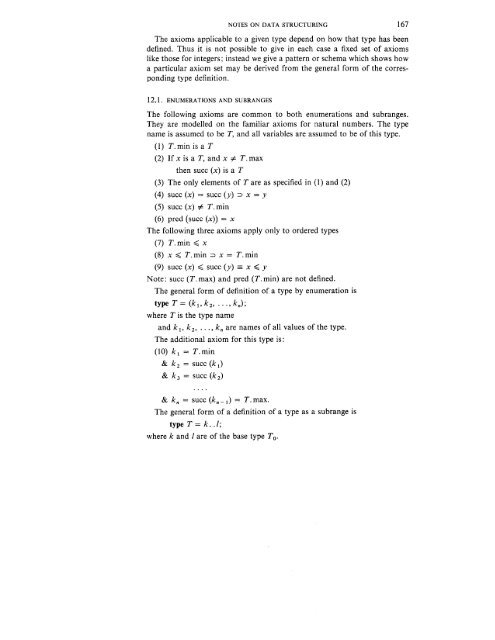II. Notes on Data Structuring * - Cornell University
II. Notes on Data Structuring * - Cornell University
II. Notes on Data Structuring * - Cornell University
You also want an ePaper? Increase the reach of your titles
YUMPU automatically turns print PDFs into web optimized ePapers that Google loves.
NOTES ON DATA STRUCTURING 167<br />
The axioms applicable to a given type depend <strong>on</strong> how that type has been<br />
defined. Thus it is not possible to give in each case a fixed set of axioms<br />
like those for integers; instead we give a pattern or schema which shows how<br />
a particular axiom set may be derived from the general form of the corres-<br />
p<strong>on</strong>ding type definiti<strong>on</strong>.<br />
12.1. ENUMERATIONS AND SUBRANGES<br />
The following axioms are comm<strong>on</strong> to both enumerati<strong>on</strong>s and subranges.<br />
They are modelled <strong>on</strong> the familiar axioms for natural numbers. The type<br />
name is assumed to be T, and all variables are assumed to be of this type.<br />
(1) T.min is a T<br />
(2) If x is a T, and x 4: T. max<br />
then succ (x) is a T<br />
(3) The <strong>on</strong>ly elements of T are as specified in (1) and (2)<br />
(4) succ (x) = succ (y) ~ x = y<br />
(5) succ (x) -¢ T. min<br />
(6) pred (succ (x)) = x<br />
The following three axioms apply <strong>on</strong>ly to ordered types<br />
(7) T.min

















